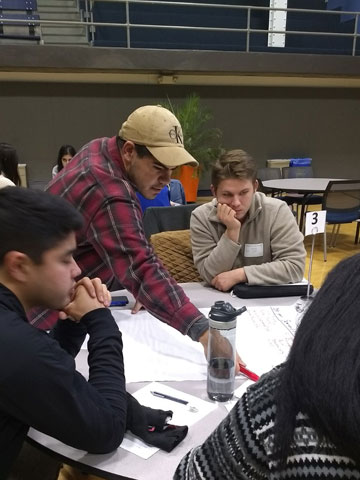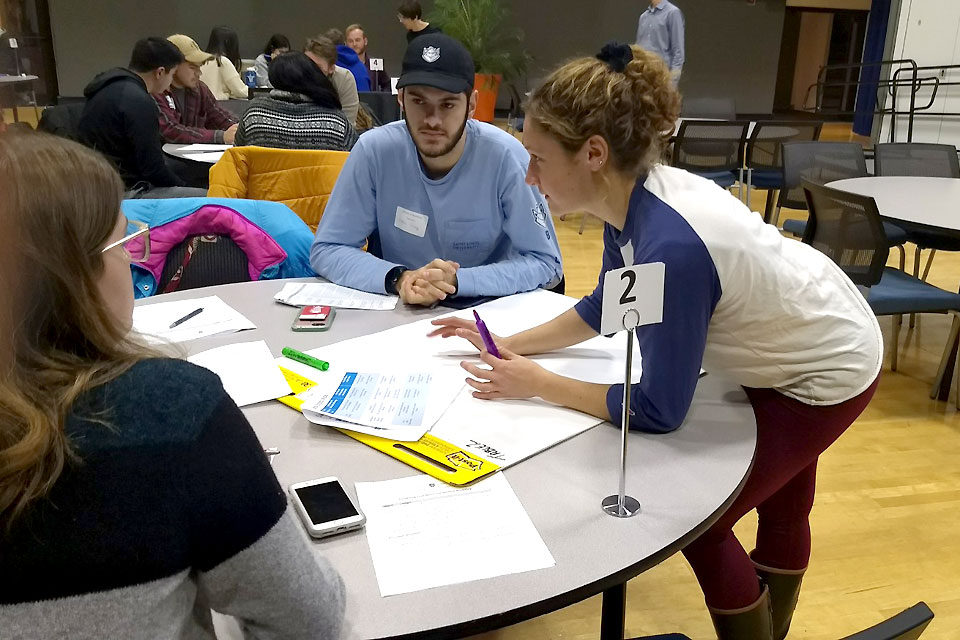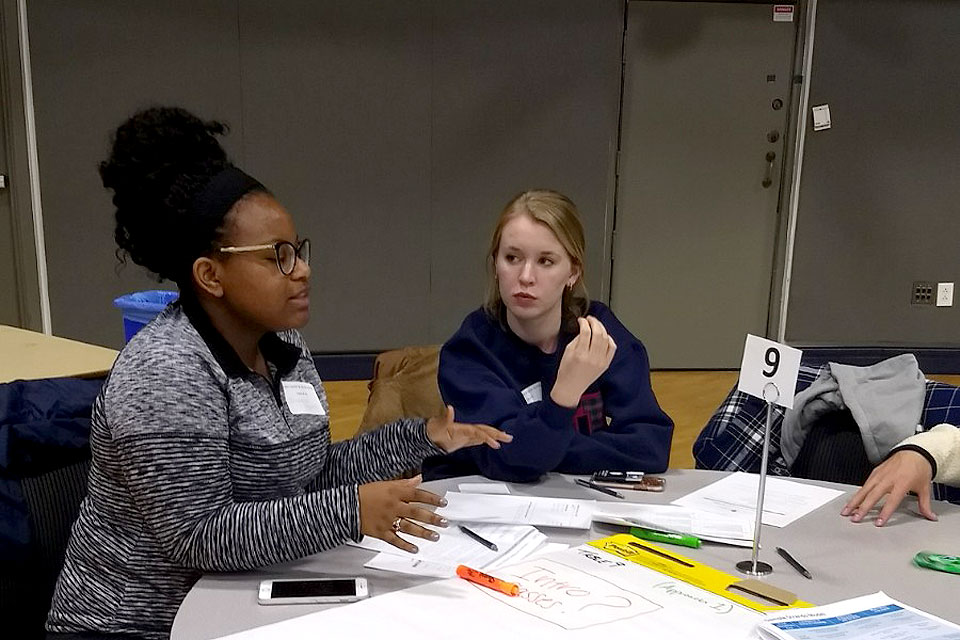SLU Community Input Drives Core Design Process
As spring semester gets underway, the SLU community continues to shape the undergraduate curriculum that will form the University’s new common core.
A planned roundtable on Friday, Feb. 1, and the continuation of the core’s design phase are just the latest steps toward defining what the essence of what a SLU education looks like.
“In the end, our SLU Core is a community-constructed core,” Ellen Crowell, Ph.D., director of CORE for SLU, said, “one that faculty, students and staff members have all had a voice in creating.”
Since the process began in the spring of 2018, the University Undergraduate Core Committee (UUCC) and SLU community have ratified a set of nine Core Student Learning Outcomes. These will serve as the base for SLU’s future common core.
During the summer of 2018, the committee and other University stakeholders explored best practices for core design and attended the Association of American Colleges and Universities (AACU) Summer Institute on General Education and Assessment. The June institute served as the starting point for developing an engagement plan for the wider SLU community, which included a new Undergraduate Core website that launched in fall 2018.

The committee brought Paul Hanstedt, Ph.D., a nationally-recognized expert on core curricular development to campus in September 2018. Together with the Reinert Center for Transformative Teaching and Learning, the committee also hosted five “Inventing Core Structures” workshops on SLU’s St. Louis and Madrid campuses that saw more than 400 SLU faculty, staff and students participate in re-imagining what makes a SLU education. The committee also hosted a Dec. 4, 2018 workshop, “Designing Core Structures,” to connect members of the SLU community around the question of what Billikens want the undergraduate experience to accomplish.
New Core Characteristics
It could only make sense at SLU.
It offers prospective students something they value deeply and couldn’t get anywhere else.
It represents an essential part of a student’s SLU education.
It raises questions we don’t know the answers to.
As the core development process continues this year, the committee had planned a series of spring semester events to continue the campus engagement process.
Students, faculty and staff members have until Friday, Feb. 1 to send in core design submissions. Once the submissions are received, the committee will begin its review process. The committee has created a Core Design Toolkit to help teams and individuals with their submissions.
“We will incorporate concepts, ideas and inspirations from all submissions,” Crowell explained, “with a goal of developing three possible ways forward to present to the SLU community.” That presentation, she continued, should take place in April. After a feedback period, the committee will then work through the summer of 2019 to craft one Core model. This draft model will be presented to the SLU community in August 2019 for further review and refinement.
Following University approval of the new core structure, the committee and University stakeholders will begin developing and piloting new core courses in 2020.
A full roll-out of the new core is planned for fall 2022.
Want to Help Design SLU’s Core?
Attend the ACJU Core Directors Roundtable on Friday, Feb. 1.
Submit your design suggestions here.
For more information, visit the core committee or contact the committee. Learn more about the committee here.
Story by Amelia Flood, University Marketing and Communications



















